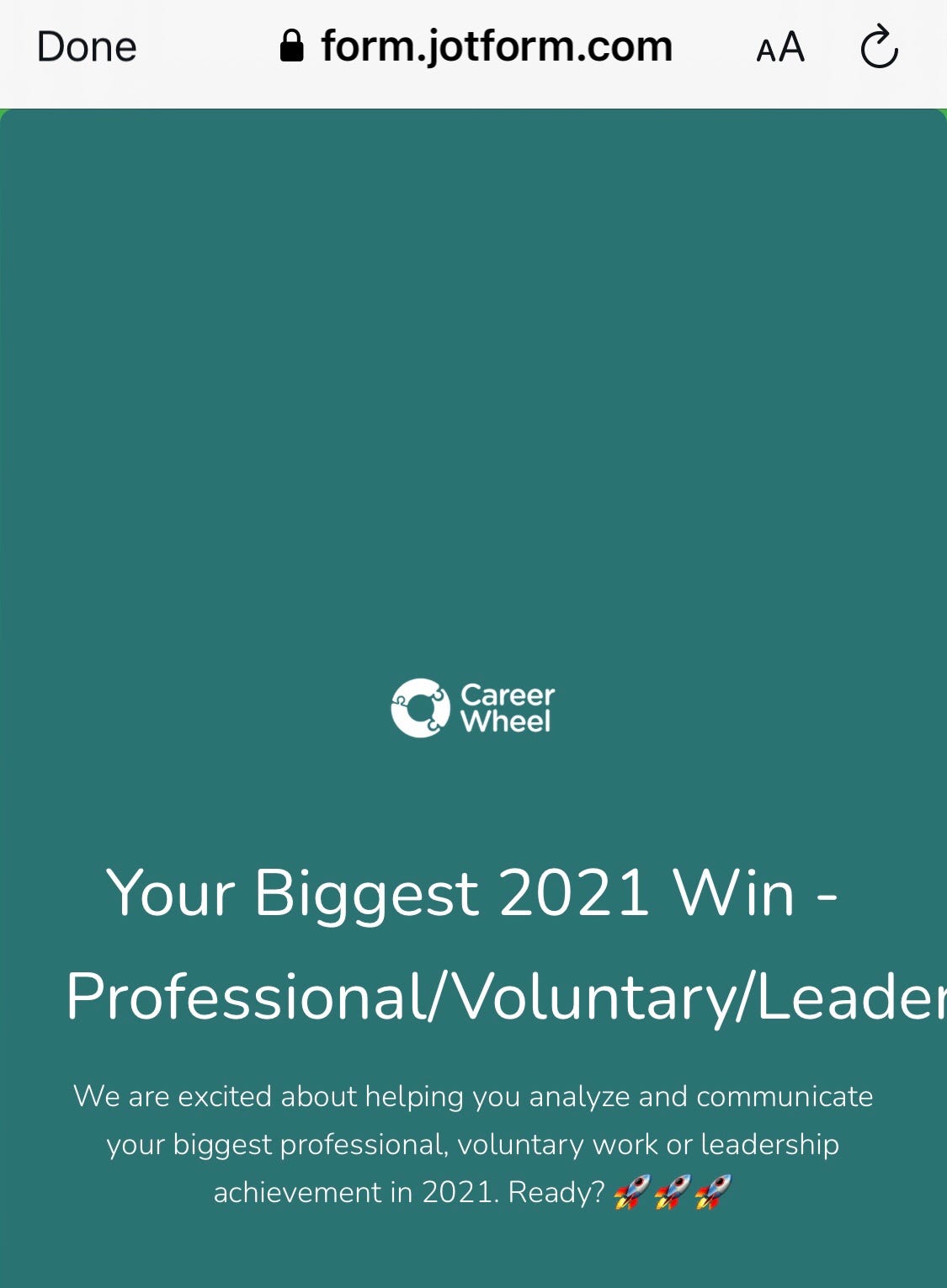Henry Ford’s famous quote, ‘If I had asked people what they wanted, they would have said faster horses,’ speaks to the idea that users may not always be aware of the problems they face or how to solve them. This is why founders apply the principles of Design Thinking to solve problems for their users. Joel Anaman, the founder of Mande, exemplifies an entrepreneur who solves hidden pain points for users. Solving such problems is not the prettiest part of being an entrepreneur. At the start, it seemed challenging for him, but he figured it out. How did he do it? Keep reading!

The Birth of Mande
It all started when Joel decided to start Career Wheel, a career consultancy company, at the beginning of 2020 to formalize the pro bono career coaching services he had been offering. Having served hundreds of clients globally, primarily with their resumes and CVs, he discovered that most of them went through their jobs without tracking their impact with data. Tracking your impact with data as an employee is essential for demonstrating your value to the organization, which can lead to better compensation and increased opportunities for promotion. However, most people (myself included) don’t do it, perhaps because we feel it’s management’s responsibility to do so.
“For half a decade, I supported early career professionals with pro-bono career coaching. At the beginning of 2020, I decided to launch a career consultancy business, Career Wheel, to formalize this pro-bono work. Over the next two years, we served hundreds of clients globally, primarily with their resumes and CVs. It was interesting to discover that 90% of them went through their jobs without tracking their impact with data. They focused on their tasks, responsibilities and other day-to-day activities. But the right way is to focus on the results of those tasks performed. You introduced a new process at work? How did that benefit the company? Did it bring in money? Simplify work for co-workers to save time? Reduced risk exposure for your employer? It’s these kinds of results and evidence that sets you apart from your colleagues and opens doors for you. So for instance, I once had a chat with an analyst who had saved her company $713,000 but was unaware because she wasn’t tracking. I only had to introduce her to Mande’s frameworks. It was pretty refreshing to see how she believed more in her abilities when we discovered this impact together. So we came up with a concept: Instead of waiting until you want to write a resume to look back and try to quantify your impact, why not do it in real time? Every win, no matter how small, gets logged somewhere. That was the birth of Mande,” he recounts how he came up with the idea for Mande.
Validating the Concept

Joel knew he needed to validate the concept before building the Minimum Viable Product. So, he built a prototype in Jotform with the help of his team for testing the concept as advised by Big Chief (Victor Asemota) in the tweet above. This offered them insights into the needs of their users.
Reflecting on the experience of validating the idea, Joel explained, “Although we had spoken to well over 200 professionals, we thought it was prudent to validate the solution. It’s one thing validating the problem and another validating the solution. One thing that makes the problem we are solving complex is that 90% of our users have no idea about the problem they are facing. I built a prototype in Jotform for testing; definitely not the best but okay to validate the concept. The form asked users what their biggest win was for 2021. It took an average of 25 minutes for users to complete the form because they had to do some deep reflection. With the information shared, I manually worded a summary for our 40+ users, created resume bullets on top of that and most importantly got on a one-on-one call with each of them. Most of them showed excitement and a renewed self-awareness although they wish the form could be shorter. My team and I then leveraged all these insights to design our MVP. One other thing I did was to incorporate an analytics tool (Zuko analytics) to give us visibility about. where people dropped off. These insights were useful as well.”

Building the Minimum Viable Product
The team launched a landing page to gauge interest in the product based on the insights gathered from the Jotform. The landing page received 500 organic sign- ups two (2) months after release prompting the team’s decision to build a Minimum Viable Product. In building the MVP, they incorporated an analytics tool called Zuko Analytics to gain visibility on where people dropped off. They also introduced triggers to help users remember their wins easily after a day or two, or even a week. The first version of the MVP went live in November 2021, and a second version was released in late January 2022 based on feedback from testing the first version.
“Our Jotform prototype helped us discover a lot of insights into what users struggled with while reflecting on their wins. This allowed us to compress the user’s happy path into three simple steps. Together with our designers, we leveraged a couple of explorations to design the simple three-step process that captures every relevant piece of information. In the future, we plan to transform this into a one-page experience,” he explains.
Going to Market
Mande began a private beta in December last year as part of its market strategy, offering exclusive access to those who joined their waitlist. They plan to gradually invite people from their waitlist to test the product before opening up to the public. Currently, they are testing the product with their first batch of private testers, gathering feedback to improve the product.


Milestones
Mande has leveraged artificial intelligence (AI) to simplify the user experience with new features. “As we come to the close of the first quarter, you may be getting ready for a mid-cycle performance review. How do you assess the business value of the amazing work that you have done throughout the quarter and present it to your manager? Mande Quant is simplifying this task. You can discover up to 10 data points for each initiative you took to objectively communicate the value delivered to your employer. Q2 will start in April and you will definitely set those audacious goals and targets with your manager. So we have built Mande Goals to do the heavy lifting for you. By generating master plans for your goals, Mande Goals bridges the gap between goal setting and execution for you. Our waitlist gang have been enjoying this feature for the past month. We plan to roll out other exciting features to our waitlist before releasing to the public. I am extending a special invitation to join our waitlist and support us on this journey: https://mande.mycareerwheel.com/,” he concludes.
Takeaways
Mande’s story offers several valuable lessons for entrepreneurs. Here are some key takeaways:
Seek guidance: It’s important to seek guidance from experienced individuals who have walked the same path as you. They can provide valuable insights on how to navigate obstacles and help you make informed decisions.
User centrism: Always focus on your customers and their needs. Talk to them throughout the product development process to ensure that you’re meeting their needs and creating a product that they will love.
Closing the feedback loop: Develop a mechanism to gather, analyze and incorporate user feedback in the product to make it better. Listening to feedback from users is crucial to improving your product and creating a loyal customer base.
These are just a few of the many lessons that Mande’s story has to offer. We’d love to hear what you have learned from this inspiring journey.
Share your insights and experiences in the comments below.


